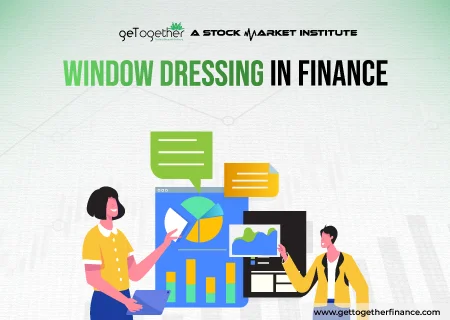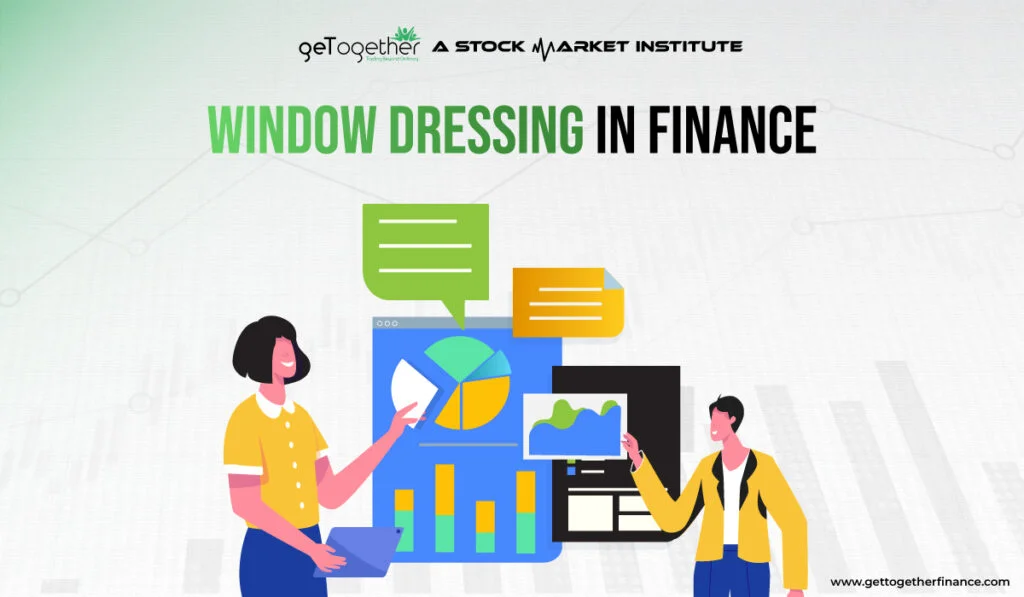Window Dressing in Finance: Impacting Investor’s Decisions
- September 16, 2024
- 921 Views
- by Manaswi Agarwal


Window dressing in finance is a strategy of manipulating the reports so that it seems more appealing to the stakeholders and investors at the end of the reporting period. Generally, fund managers try to attract investors by making changes to their investment strategies just before the end of reporting period, or fiscal period. The blog will assist you completely about the practice of window dressing in finance or in the stock market.
Table of Contents
ToggleWhat is Window Dressing in Finance?

In finance, or in the stock market, window dressing refers to the practice of making changes to the investment holdings in order to improve the appearance of the portfolio when presented to the clients or shareholders. For example, a fund manager will tend to sell the positions that are in loss and display the positions that have constantly gained in value to make the returns look more attractive to the investors. Many financial institutions have been criticized for window dressing as they move debt off the balance during the end of a quarter.
Motive of Window Dressing
Window dressing makes the company look more appealing and hence drives investors to invest more in such companies. Let us look what is the purpose of window dressing:
- To make the company look more appealing and to attract more investors.
- To hide the ineffective management choices of fund managers.
- To achieve the financial goals of a company.
- To strengthen the liquidity position of a company.
- It signifies a strong return on investment.
Common Methods of Window Dressing

Companies can use several accounting methods to manipulate their financial statements, some of the most common methods of window dressing includes:
Cash Method
A delay in the supplier’s payment will make the cash balance look in a positive direction at the end of a period which is false information as it must be deducted timely.
Revenue Method
Discounts are given to consumers for early shipments which brings future income into the present. It increases the revenue of the business making it look attractive to the investors.
Manipulating Depreciation
Profitability of the business is enhanced by deducting depreciation expenses and extending the useful life of assets which seems to be useful for investors.
Financial Ratios
Window dressing of financial ratios is performed to adjust the figures of various ratios like liquidity ratio and debt to equity ratios with other several ratios which are closely monitored by the investors.
Window Dressing in Mutual Funds

Window dressing is a short term strategy used by fund managers to make the fund look more attractive to the investors. This strategy is heavily executed in mutual funds where the fund managers tend to sell the positions that are not performing well and use the money to quickly buy the stocks that are in high performance range. The activity is performed at the end of reporting period to make the funds look better than in actual. Such a strategy is adopted so that investors can only look at the high performing stocks and are more likely to invest in the funds which would add more income to the investment pool.
Also Read: Mutual Funds to Invest
Window Dressing in Stocks
In stocks, this strategy is adopted by the public companies when reporting earnings. The companies tend to modify their quarterly earnings and use creative accounting methods to manipulate the investors so that the fundamentals of the company become more appealing and attractive. This activity misleads the investors about the true value of the company which makes it psychologically attractive.
How to Identify Window Dressing Practices?

Being a fundamental investor, you need to keep an eye to detect window dressing practices by a company.
Financial Ratios: Keep a focus on unusual fluctuations or inconsistencies in the financial ratios represented by the company in its financial statements.
Review Footnotes: In financial statements, detailed footnotes provide extra information which reveals significant accounting policies and changes that might help you to indicate window dressing.
Competition: Compared with companies that belong to the same industry, discrepancies and unusual financial results are highlighted. Investors can identify unusual practices and protect themselves from them.
Scrutinize Cash Flows: Irregular cash flow statements can be identified from large discrepancies between net income and operating cash flow.
Consequences of Window Dressing

Window dressing is a strategy or a practice due to which the actual value of a company gets manipulated leading investors to make wrong decisions. Before investing in any stock,
Manipulation of Truth
Investors are given misleading information when fund managers alter the positions at the end of reporting or when the companies make changes in accounting. It would not let the investors know the actual performance of the company and risk profile of a portfolio.
Market Distortion
At the end of a quarter, or a reporting period, many managers engage in a temporary similar activity of price distortions simultaneously. The temporary movement led to increase in market volatility leading to price distortions.
Short Term Focus
By manipulating the funds, the strategy focuses on short term gains instead of long term strategies and stability of the stocks. This limits the potential to enjoy capital gains of several stocks.
Summary
We have seen in this blog, window dressing is a kind of manipulative short term strategy used by the company to demonstrate strong financial statements and higher returns on investments which is not the actual truth. This is why investors are warned before making an investment position which can trap them. GTF – Trading in the zone course guides investors to make strong investment positions in their portfolio through a demand and supply approach and saves them from window dressing.
FAQs
What is Window Dressing?
Window dressing is a short term strategy used by companies to make their financial statements look more appealing to the investors at the end of reporting period.
What is the use of Window Dressing?
Window dressing is used as a strategy by companies in accounting which makes the financial statements and portfolios look better than in actual. Implementing this strategy helps the companies to get loans and investments from the investors.
Is window dressing good or bad?
The strategy is unethical as it provides manipulative information to the investors and misguides them to make the company look more appealing. So, the strategy is inappropriate because it does not reveal the actual performance of a company.



 Instagram
Instagram
